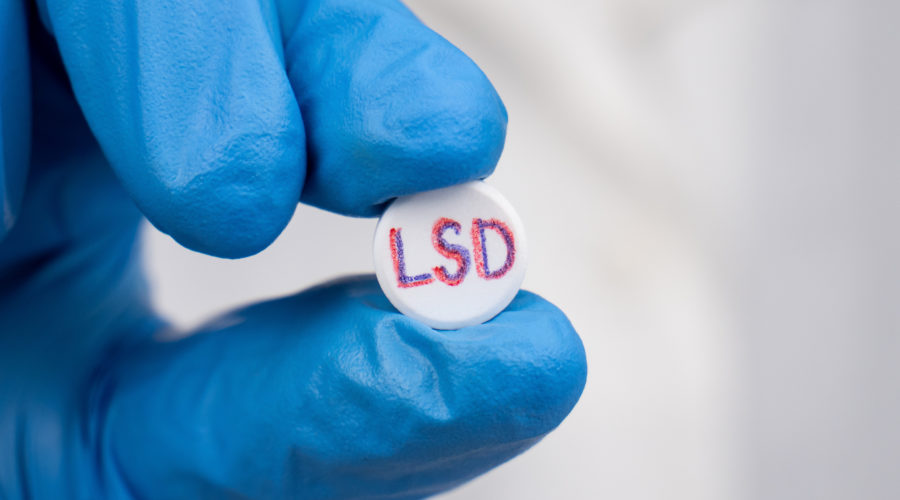Is LSD Legal – Everything You Need To Know
LSD, or lysergic acid diethylamide, is a popular recreational drug and classic psychedelic with a complicated history. Despite its low toxicity and well-documented therapeutic potential, LSD remains illegal in the U.S. and most countries around the globe. LSD is not legal, in part, because of the stigmatization it suffered in the 1960s.
Is LSD Legal?
In the United States, LSD is not legal, and is a Schedule I controlled substance. This means it is considered by the Drug Enforcement Administration (DEA) to have a high potential for abuse with no accepted medical uses. (It’s worth pointing out that according to the federal drug schedule, other, more harmful drugs like cocaine, oxycodone, and even fentanyl are considered less dangerous than acid.)
The Controlled Substances Act stipulates that LSD is illegal to manufacture, possess, buy, sell, or consume in any form. Most other countries in the world similarly classify LSD. However, an increasing number of jurisdictions have introduced regulations that allow people to possess small amounts of illegal drugs without the risk of prosecution. One such jurisdiction is Oregon, which eliminated criminal penalties for all illegal drugs in November 2020.
Interested in joining a Psychedelics Clinical Trial? Sign up here now and we will connect you with a clinical trial in your area when one becomes available.
Where Is LSD Legal?
While it is not legal in the U.S., where is LSD legal?
In Portugal, where drugs have been decriminalized, LSD is widely available. Some countries allow personal possession of LSD, such as Mexico, where a person can possess up to 15 micrograms. Similarly, in Ecuador, a person can possess up to 20 micrograms of LSD without breaking the law.
Personal possession of LSD has also been decriminalized in the Czech Republic. No country in the world has legalized it.
Why LSD Is Illegal: Unpacking The History
One cannot answer the question of why LSD was made illegal without unpacking some of its history. Over a period of just a few decades, LSD went from being considered a “miracle drug” to a menace. It continues to be affected by that same stigma today (albeit to a lesser degree).
In 1947, four years after the effects of LSD were discovered by chemist Albert Hofmann, the pharmaceutical company Sandoz began producing the drug as a commercially available psychiatric medication under the name Delysid. This indicated it was meant for patients suffering from psychoneuroses and psychoses. Believing it had clinical applications, American doctors took an interest in the drug. In 1949, Sandoz began sending them samples.
LSD was explored in psychotherapy settings throughout the 1950s as a potential cure for alcohol use disorder, and toward the end of the decade, psychiatrists including Oscar Janiger began giving LSD to artists and creatives with the idea that it would spur creativity. It was around this time that the drug began being used by some researchers outside of investigative frameworks and in more recreational settings, including at parties where those in attendance were encouraged to take the drug.
The recreational use of LSD was popularized in the early ‘60s, in part by San Francisco writer Ken Kesey, who along with his group of Merry Pranksters threw acid-fueled parties or “acid tests” featuring live bands like the Grateful Dead. LSD quickly became a symbol of the underground, and researchers began to speak out against its casual use.
A paper authored in 1962 by Dr. Sidney Cohen, an early adopter of LSD as a therapeutic who had been studying the drug for almost a decade, warned its misuse by the public would eventually work against research efforts. In the paper, Cohen argued the drug ought to be used strictly in medical settings and suggested that the ongoing lack of caution around its use would eventually put people in danger.
It was also in 1962 that Harvard professor Timothy Leary, founder of the Harvard Psilocybin Project, was introduced to LSD. The work of Leary and his colleague Richard Alpert (later known as Ram Dass) turned college students across the country onto psychedelics. However, it irritated other professors and researchers who, like Cohen, saw their casual approach as a threat to psychedelic research.
The following year, Leary was fired from his role at the university after abandoning clinical protocols and administering psilocybin to undergraduate students. He became the generation’s most outspoken proponent of LSD and had a profound influence on North American counterculture.
In 1967, the so-called “high priest of LSD” commanded the audience at the Human Be-In in San Francisco’s Golden Gate Park to “turn on, tune in, drop out.” This was a phrase he’d used as the title of his 1966 spoken word album.
“Unhappily, my explanations of this sequence of personal development are often misinterpreted to mean ‘Get stoned and abandon all constructive activity,’” he wrote.
Leary’s brazen attitude towards LSD specifically and drug use in general soon caught the attention of President Richard Nixon, who would later refer to Leary as, “the most dangerous man in America.” It was the late ‘60s, and while the drug thrived among proponents of the counterculture, the media began reporting on adverse events related to LSD, including fatalities.
One such case involved the death of Diane Linkletter, the daughter of TV personality Art Linkletter. Her father claimed she was high on LSD before jumping to her death from a sixth-story window. However, an autopsy later revealed she had no drugs in her system at the time of her death. Unfortunately, the report failed to allay fears that LSD had the potential to cause serious harm.
It was this combination of factors — the role LSD played in the counterculture, particularly among anti-war protestors and young people, and its potential danger — that ultimately led to its scheduling.
When Was LSD Made Illegal?
The psychedelic drug LSD was first prohibited long before U.S. President Richard Nixon declared an “all-out offensive” on drug abuse in June 1971.
The first law to target LSD was passed in 1962, when the Food, Drug, and Cosmetic Act was amended so that scientists interested in studying LSD (or any pharmaceutical) had to establish the drug’s efficacy before conducting their research. The emphasis on rigorous clinical trial methods and study design significantly impeded their work on psychedelic psychotherapy.
State laws prohibiting LSD were passed in California, Nevada, and New York in 1966, though they went largely unenforced. Then in 1968, U.S. Congress passed a bill amending the Food, Drug, and Cosmetic Act to ban the personal possession of LSD at the federal level.
Two years later, on October 27, 1970, the Controlled Substances Act was signed into law.
This set forth a defined scheduling system, classifying drugs like LSD, magic mushrooms, and other drugs as having no medical value and a high potential for abuse. Once it was signed into law, federal funding for the study of drugs was no longer provided to researchers and universities. The DEA then stopped giving scientists approvals to possess LSD, bringing an end to investigations of the drug in the United States.
America’s War on Drugs quickly influenced drug policy in other countries.
The U.K. passed its Misuse of Drugs Act in 1971. This set out classes of drugs — similar to those those used in the Controlled Substances Act. While new drug laws had come into force in Canada in 1961, enforcement of those laws increased substantially after the War on Drugs began south of the border. Australia introduced its own drug scheduling system in 1989, and Canada followed suit in 1996.
Government Uses Of LSD
While Nixon’s disdain for drugs might indicate that the federal government would have nothing to do with LSD, the precursor to the Central Intelligence Agency (CIA), the Office of Strategic Services, tested LSD on humans.
Between 1953 and 1973, it ran a program called MK Ultra. The program sought to assess whether psychedelic drugs like LSD and mescaline could be used for mind control and brainwashing. (Ken Kesey, the architect of the acid test, was among those who were given LSD as part of MK Ultra.)
MK Ultra was never intended to be public knowledge. During the Watergate scandal of 1973, records of the program were ordered to be destroyed. However, some survived, and were even publicized in 1977. The public was rightfully outraged that a federal agency had experimented on humans with mind-altering drugs. Moreover, it’s likely this unethical use of LSD caused many to believe that the drug was inherently harmful.
Where To Buy LSD In The United States
Since LSD is not legal in the U.S., there are no legal options for buying it in the country. The only way to access the drug legally is through participation in an approved clinical trial.
LSD can be purchased on underground markets through illicit sources throughout the United States, online and off.
As the hype around psychedelic drugs builds, an increasing number of purveyors of illicit substances can be found on social media platforms like Instagram and Twitter, despite user guidelines that prohibit such activity. It’s hard to say how reliable such accounts are, and it’s hard to say for sure whether an interaction and exchange of payment will result in the actual sale of a product — or just a scam.
Whether searching the internet for LSD, or asking around at a music festival or other live events, it’s crucial to vet potential sources. If you’re able, lean on existing connections within your network. This means finding a source that has been vetted by a friend. Always choose that over one that you found in a Google search. LSD can also be purchased online through the Dark Web, where users can purchase drugs and leave anonymous reviews.
Purchasing drugs on the Internet can leave buyers with another question: Is this substance actually legitmate? The best way to answer this question is to use a drug testing kit, which can be purchased online.




Trevor Reich
December 18, 2022 at 5:15 amHi, l really enjoyed reading Amanda’s article. It was written quite well! Thank you & fare the well!
Marcus Valerius
March 18, 2023 at 3:49 pmThere is a legal loophole in Germany. 5 months ago, lsd with an extra Molekule became legal overnight. The Same Thing Happens in the netherlands.